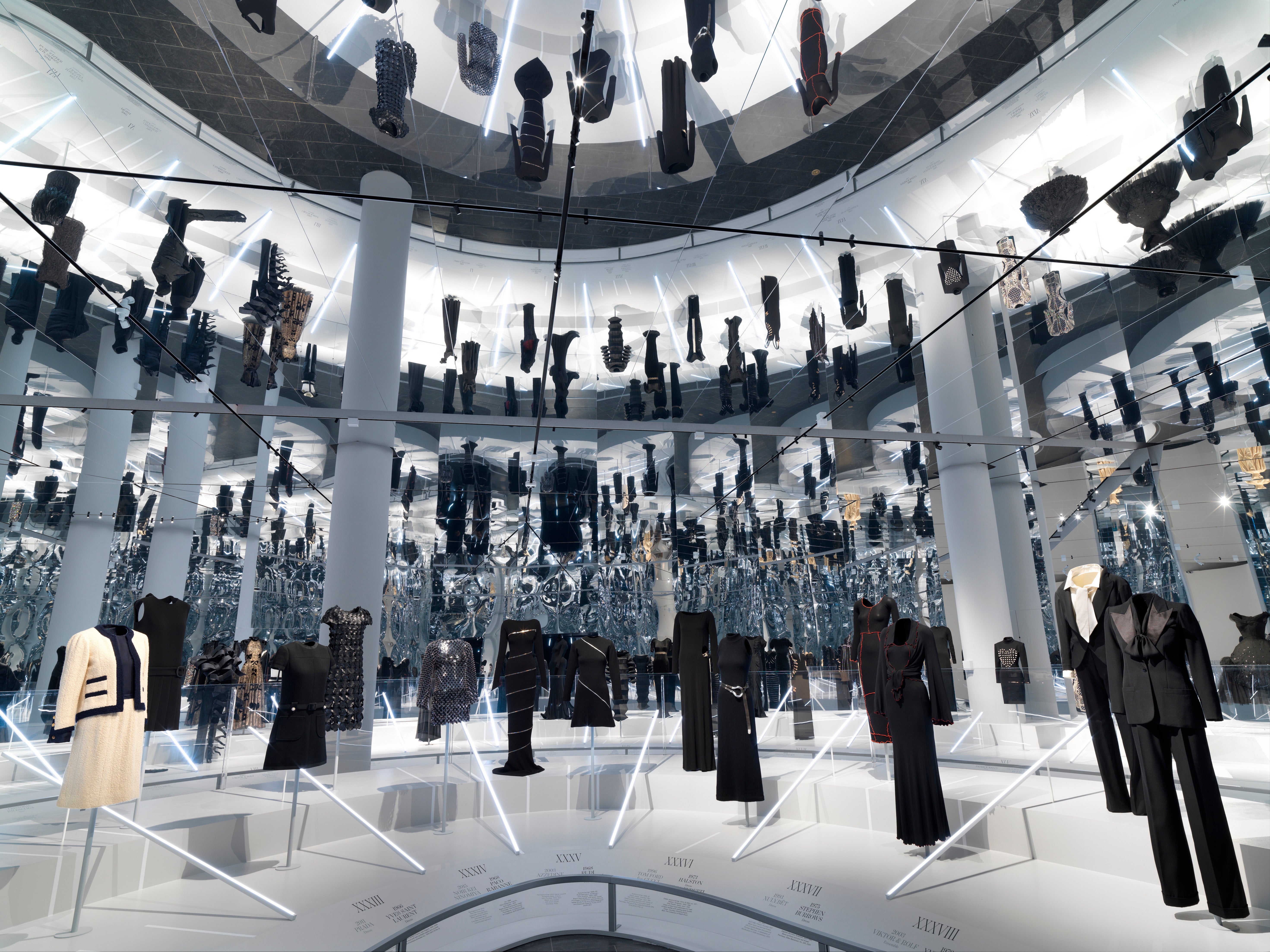Sans gala or red carpet, a stylish fashion show at the Met
Amid all the hoopla around the annual Met Gala red carpet, sometimes the real star is forgotten: the fashion exhibit inside

Your support helps us to tell the story
From reproductive rights to climate change to Big Tech, The Independent is on the ground when the story is developing. Whether it's investigating the financials of Elon Musk's pro-Trump PAC or producing our latest documentary, 'The A Word', which shines a light on the American women fighting for reproductive rights, we know how important it is to parse out the facts from the messaging.
At such a critical moment in US history, we need reporters on the ground. Your donation allows us to keep sending journalists to speak to both sides of the story.
The Independent is trusted by Americans across the entire political spectrum. And unlike many other quality news outlets, we choose not to lock Americans out of our reporting and analysis with paywalls. We believe quality journalism should be available to everyone, paid for by those who can afford it.
Your support makes all the difference.The annual hoopla around the celebrity-studded Met Gala is so intense, it's often forgotten who the real star is: the fashion exhibit inside.
This year, it's the only star. A stylish Costume Institute show at the Metropolitan Museum has opened, six months behind schedule. But what’s six months when you’re covering 150 years of fashion?
And that’s the point, in more ways than one, of “About Time: Fashion & Duration,” which explores the concept of fashion through time. Time is a flexible concept, it argues. It is not linear, at least not where fashion is concerned. Ideas revisit themselves through the decades, even the centuries.
That was the central concept even before the exhibit, traditionally launched by the Met Gala in May, was waylaid by the pandemic — which changed everything, including our concept of time. (How many times have you heard someone ask what day or month it is?)
So the fact that “About Time” was able to open at all is cause for celebration. As the Met’s director, Max Hollein, said in opening remarks: “We could not imagine, when we chose the name for this exhibition more than a year ago, how apt the title would become.”
Of course, everything is different this year. Instead of speaking in person at the annual press preview, Hollein and curator Andrew Bolton spoke virtually, and masked, in taped remarks. And crowd size is being restricted, in accordance with guidelines for museums — likely not a bad thing in terms of the viewing experience.
Visually, the show is concise — smaller than recent extravaganzas like the opulent “Heavenly Bodies: Fashion and the Catholic Imagination.” Nearly every garment on display is black, save a couple in white or cream. Rather than a collection of loaned items from across the globe, the exhibit consists almost entirely of items from the Institute’s collection.
The design of the show, by Es Devlin, is intended to convey the inner and outer workings of a clock. There are two clocks, two galleries, and two timelines. One timeline is chronological, beginning in 1870, when the museum was founded (this year marks the 150th anniversary.) The other is what Bolton calls “a disrupted timeline of fashion" — involving flashbacks and fast-forwards, or “interruptions.”
The show’s “ghost narrator” is Virginia Woolf author of “The Hours” among other things; some of her writings are read aloud by Nicole Kidman, Meryl Streep and Julianne Moore, who starred in that 2002 film.
Garments are placed in 60 pairs, each containing one from the chronological timeline and one from the disrupted one. What they show is that ideas, shapes, techniques or materials constantly refer back (or project forward) to each other over time.
Paired together, for example, are a 2012 futuristic black Iris van Herpen gown, using 3D printing technology and resembling a very chic aquatic creature, with a classic 1951 Charles James ballgown with crescent-shaped puffs in cream silk — essentially the same shape.
A 1919 silk satin and chiffon gown with a so-called “barrel skirt” — named for its shape — is accompanied by a highly exaggerated barrel-shaped dress from 2012-2013 by Rei Kawakubo of Comme des Garcons in radically different material: polyester felt with sequins.
And a 1930s pleated black silk charmeuse dress from Spanish designer Mariano Fortuny is juxtaposed with Issey Miyake’s 1994 otherworldly “Flying Saucer” dress in accordion-pleated taffeta.
The fashion world, like most industries, has been hit hard by the pandemic. But in his own virtual remarks, designer Nicolas Ghesquiere creative director of show sponsor Louis Vuitton, made reference to a possible silver lining: “The pause the pandemic has imposed on many of us has also created a certain space to reflect on where we are and where we are going,” he said. “Even in the most turbulent times, art, fashion and culture can help us navigate change and frame how we see the world anew.”
The show ends with a solitary piece from designers Viktor & Rolf, a white patchwork dress made up of pieces from their archive of fabric swatches. It's meant as a metaphor, Bolton noted, “for the future of fashion and the importance of community, collaboration and sustainability.”
“About Time: Fashion & Duration” runs through Feb. 7.